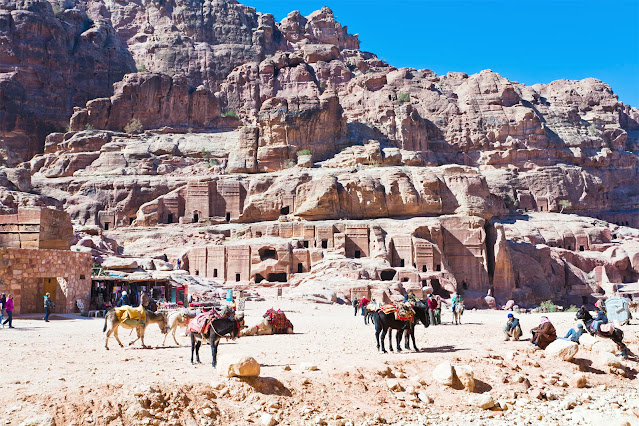 |
| A Look into the Bedouin Lifestyle and Traditions |
The Bedouin lifestyle and traditions have captivated the imagination of many for generations. These nomadic people, known for their strong sense of community and enduring customs, offer a glimpse into a world steeped in history and culture. In this article, we embark on a journey to unravel the secrets of the Bedouin way of life, their traditions, and the unique practices that define their existence.
The History of Bedouin Life
The roots of the Bedouin lifestyle run deep in the deserts of the Arabian Peninsula. For centuries, these resilient people have navigated the harsh desert terrain, leaving their indelible mark on history. From the ancient trade routes to their role in the Islamic expansion, the Bedouins have a rich historical legacy.
Nomadic Heritage
The Bedouin way of life is inherently nomadic. Their lives revolve around the seasons, moving from one place to another with their herds in search of sustenance. This nomadic heritage has defined their identity and allowed them to adapt to the challenges of the desert.
The Importance of Hospitality
Hospitality is a cornerstone of Bedouin traditions. When a traveler stumbles upon a Bedouin tent, they are welcomed with open arms. This custom has its roots in the desert's harshness, where survival often depends on the kindness of strangers.
Traditional Clothing
The traditional attire of the Bedouin people is not just a matter of style; it's a practical adaptation to the desert environment. Their flowing robes and head coverings protect them from the scorching sun and blowing sand, making it both functional and iconic.
The Language of the Desert
The Bedouin people have their unique dialect, known as "Bedouin Arabic." This language is an integral part of their culture, handed down through generations, and serves as a bond that unites them in their nomadic lifestyle.
Camel Culture
Camels are the "ships of the desert," and for Bedouins, they are more than just a mode of transportation. These majestic creatures are integral to their way of life, providing milk, meat, and even shelter in the vast desert expanse.
The Art of Storytelling
Passing down their history and traditions through generations, Bedouins are renowned for their storytelling prowess. Gathered around a campfire, they share tales of their ancestors, their journeys, and the lessons learned in the desert.
Music and Dance
Bedouin culture comes alive with music and dance. Their rhythmic melodies and traditional dances are not only a form of entertainment but also a way to celebrate life and community.
The Mystique of the Desert Night
The Bedouin lifestyle takes on a magical quality at night. Under the star-studded desert skies, they gather for tea and conversation, and the tranquility of the night is cherished.
Bedouin Cuisine
The culinary traditions of the Bedouin people are a testament to their resourcefulness. They create flavorful dishes using simple ingredients, often relying on staples like dates, camel milk, and unleavened bread.
Marriage and Family
The family unit is central to Bedouin life. Marriages are often arranged, and family bonds are deeply cherished. This section explores the customs surrounding weddings and family life.
Social Structure
Understanding the Bedouin social structure is crucial to comprehending their way of life. Tribal affiliations play a significant role, and hierarchies are formed based on lineage and reputation.
Bedouin Crafts
The Bedouin people are skilled artisans, crafting beautiful and practical items such as rugs, jewelry, and clothing. This section delves into the artistry and craftsmanship that is a hallmark of their culture.
Spiritual Practices
Religion is a vital component of Bedouin life. This section examines their spiritual beliefs, rituals, and how faith guides their actions and decisions.
Challenges and Adaptations
The modern world poses challenges to the traditional Bedouin lifestyle. Climate change, urbanization, and political shifts are reshaping their world, and this section discusses how they are adapting.
Bedouins in Contemporary Society
The Bedouin lifestyle has had to adjust to the demands of the modern world. Discover how they balance tradition and progress in today's society.
FAQ
Q: What is the significance of camel culture in Bedouin life?
A: Camels are vital to the Bedouin lifestyle, providing sustenance and transportation in the harsh desert environment.
Q: How have Bedouin traditions evolved over time?
A: Bedouin traditions have adapted to the challenges of the modern world, while still preserving their core values and customs.
Q: What is the role of storytelling in Bedouin culture?
A: Storytelling is a cherished tradition that allows Bedouins to pass down their history and values through generations.
Q: What is the importance of hospitality in Bedouin society?
A: Hospitality is a fundamental value that ensures the survival of travelers in the unforgiving desert, fostering community bonds.
Q: How do Bedouins adapt to the challenges of the modern world?
A: Bedouins are finding ways to balance tradition and progress as they navigate the changes brought by the contemporary society.
Q: What is the significance of Bedouin crafts in their culture?
A: Bedouin crafts showcase their artistry and craftsmanship, with items like rugs and jewelry holding cultural importance.
Conclusion
The Bedouin lifestyle and traditions offer a unique perspective on a world shaped by the desert's demands. Their history, customs, and enduring sense of community provide valuable lessons for all of us. As we conclude our journey into the heart of Bedouin culture, we leave with a deeper understanding of their world and the resilience that defines their way of life.